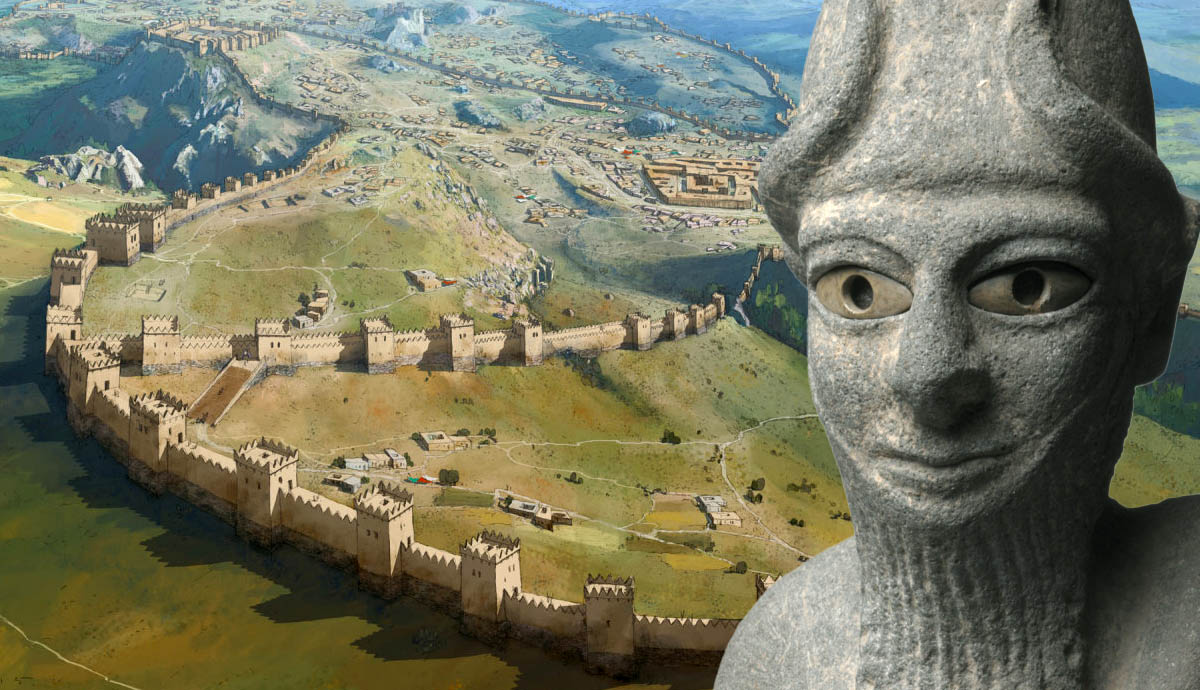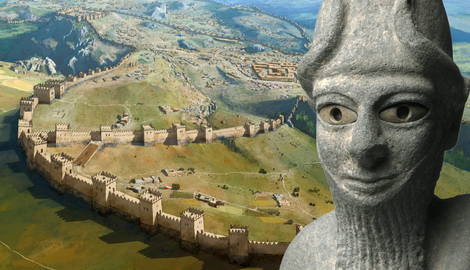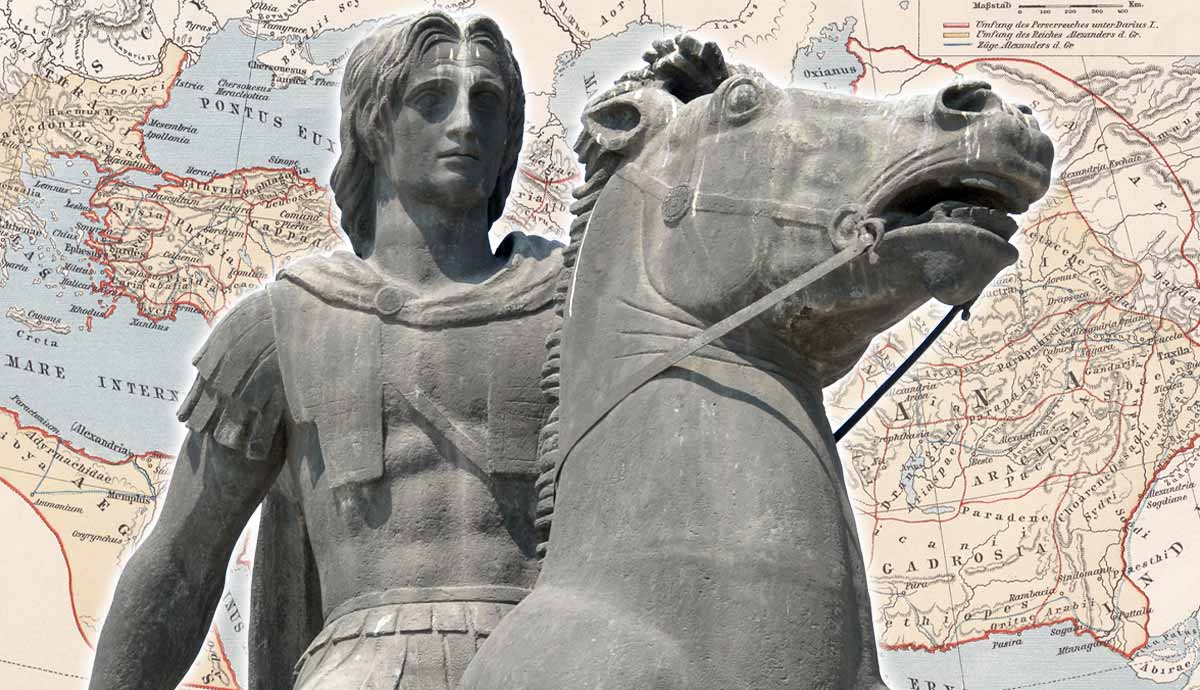
Early in the twentieth century, a German archaeological team unearthed 10,000 clay tablets near Bogazkoy, Turkey. Among the finds were the Royal Plague Prayers, setting a scenario of debate in ancient cuneiform that resonates into the twenty-first century. The Hittite capital of Hattusha that occupied the site during the Bronze Age suffered from a debilitating plague that lasted at least twenty years, from 1320 BCE to 1300 BCE. Similar to researchers today, the Hittites realized that uncovering the cause might alleviate the plague. Consequently, the king went to great lengths to discover the source of the gods’ anger and appease the deities.
Before the Plague

It is unlikely that Mursili II ever expected to become King of the Hittites. He was the last of five sons of King Suppiluliuma. Two of the sons had been sent to govern distant kingdoms. One had been sent to Egypt to become pharaoh but had been murdered en route. King Suppiluliuma and his immediate heir, Arnuwanda II, died, leaving Mursili to battle the plague that had killed his father, his brother, and so many others. The livestock, the farmland and, most seriously of all, the temples were riddled with neglect.
One of the greatest kingdoms of the ancient world at the time, the Hittites, ruled over almost all of present day Turkey including significant inroads into Mesopotamia. The kingdom bordered Egypt with which it sometimes had a treaty and with which it had comparable power and land, if not equivalent wealth.
The Hittites were constantly defending their borders. They managed, with varying degrees of success, for almost five hundred years, partly due to a relatively benign ruling philosophy. Upon conquering a kingdom, they demanded tribute, but they usually left the culture intact. Occasionally the Hittite monarchy even participated in the festivals of the local gods. When necessary, they deposed the current local ruler and imposed a Hittite governor, but overall, they were diplomatic landlords.
The Plague of the Hittites

According to the plague prayers, the epidemic began with a batch of Egyptian prisoners. Their arrival in the Hittite capital of Hattusa was due to a series of momentous events during the reign of Mursili II’s father, Suppiluliuma. King Suppiluliuma had received an unusual request from the widow of an Egyptian pharaoh; a pharaoh who most historians believe was King Tutankhamun. The letter from Queen Ankhesenpaaten, the daughter of Akhenaten and Nefertiti, and King Tutankhamen’s half-sister, asked the Hittite king to send one of his sons to become her husband. Eventually, after ensuring that the letter was valid, the king sent his son, Zannanza, who was killed on the way. Enraged, the king declared war on Egypt and duly sent an army to battle the Egyptians. The ensuing battles ended in a draw, but the military returned with a number of sick Egyptian prisoners who subsequently died, sparking the plague among “the people of Hatti,” as the Hittites referred to themselves.
Despite the testimony of King Mursili II, the plague could have had other sources. A fully virulent Yersinia pestis, the bubonic plague bacteria, has been discovered in 1800 BCE human remains from a culture likely speaking a Indo-European language in the area from which the Hittite people, also speaking an Indo-European language, may have originated. Bubonic plague is known to peak and subside and peak again for hundreds of years. The Hittite plague may have been a result of a burgeoning city that reached a requisite population level with an accompanying increasing rodent population, resulting in an eruption of the disease. Indeed, Plague Prayer 13, “Mursili’s ‘Fourth’ Plague Prayer To The Assembly of Gods” mentions a previous plague.
“All of a sudden in the time of my grandfather, Hatti was
Oppressed, and it became devastated by the enemy.
Mankind was reduced in number by the plague… “
The Structure of the Plague Prayers

The Hittite procedure to determine the cause of a calamity was to consult an oracle, perform the required ritual, provide offerings, invoke and praise the gods, and finally plead their case. Mursili II was assiduous in these duties, returning to the oracles repeatedly over the course of the plague.
Although the order of the prayers is uncertain, at least two were thought to be earlier than the five other plague prayers. The two earlier prayers had structures that were clearly derived from older prayers from Mesopotamia:
(1) Address or Invocation
(2) Praising the Deity
(3) Transition
(4) Main Prayer or Pleading
By copying the structures of older rituals, often from other cultures, the Hittites placed heavy emphasis on correct procedure. A royal library developed, often documenting the provenance of the ritual. If a ritual was uncertain, then the efforts made to determine the correct ritual were recorded. As indicated in the tablets, exact replication of the ritual was imperative in order not to annoy the gods. Modern research’s reliance on references and the legal system’s reliance on precedent is not much different. In a world view in which the lives of the people entirely depended on a god’s good will, accurately copying the ritual that had apparently pleased the god before provided a significant degree of comfort.
Considering the reliance on exactitude, the fact that, after these first two prayers, the structure of the prayers changed leads to insight into the character of the king and potentially the entire culture.
Invoking the Gods

The two main gods of the Hittites, in a long list of gods, were the Storm-god of Hattusha and the Sun-goddess of Arinna. In a city with over thirty temples, the main temple, new and enlarged by King Suppiluliuma, was a double temple for the Storm-god and Sun-goddess. This likely is where the prayers were read publicly by the scribe in front of a congregation. In addition to calling to the gods for aid, the prayers’ reading would have demonstrated to the people that the king was doing everything he could to alleviate the plague.
Incense was burned, and food and drink were provided as offerings, probably from sheep, cattle, goats, emmer wheat and barley. From No.8 Mursili’s Hymn of Prayer to the Sun-Goddess Arinna,
“Let the sweet odor, the cedar and the oil summon you. Return to
your temple. I am here invoking you by means of offering bread
and libation. So be pacified and listen to what I say to you!”
The king’s relation to the gods was as a servant, a priest, and a governor of the land which belonged to the gods. The king and the queen were not divine themselves until they died. Telipinu, the addressee of Plague Prayer No. 9, had been a Hittite king one hundred and sixty years beforehand.
Praising the Deities

Musilli changed the structure of the Hittite prayer genre. On the two earliest plague prayers, Nos. 8-9, the emphasis was on invoking the gods, enticing them to the temple and back to the land of the Hittites. The words were thick with adulation. The Hittites classified this section as “mugawar”. Prayers 10-14 changed to emphasize the pleading, the argument portion of the prayer, the “ankawar.” All the Hittite prayers afterward were light on mugawar, praise, and heavy on ankawar, pleading.
Itamar Singer in Hittite Prayers pointed out that the prayers were set up like courtroom dramas. The defendants were the Hittite people represented by the king. Oracles were the prosecution explaining the problem to the defendant. The king either confessed his guilt or provided mitigating circumstances. Flattery of the judges, members of the divine court, was sprinkled throughout the proceedings. Bribes were rife in the forms of vows and offerings.
The most intellectually interesting part of the proceeding is the argument the defendant presented in order to plead his case. This was the ‘ankawar’ that Mursili emphasized. By decreasing the flattery and increasing the argument, Mursili is respecting the intelligence of the deities by appealing to their reason rather than their vanity.
Pleading for the Hittites

Once the oracle has pointed the finger, there can be no plea of not guilty; nevertheless, the king can and does claim innocence. He was either not born yet or was too young to have been involved in his father’s deeds. However, as he notes in No. 11 “Mursili’s ‘Second’ Plague Prayer to the Storm-god of Hatti:
“Nevertheless, it so happens that the father’s sin comes upon
his son, and so the sins of my father come upon me, too.”
The oracles clarified three issues for Mursili.
First, Suppiluliuma I, usurped the throne from his own brother, Tudhaliya III. The act itself did not seem to be the issue. The guilt lay in the fact that an oath of allegiance was sworn to the gods. Conspiring and killing the brother was in direct violation of the oath.
Second, after extensive research in the library, Mursili discovered that a particular ritual at the Mala River had been abandoned since the plague began. After asking the oracle, it was confirmed that the gods were indeed unhappy with the neglect.
Third, his father had broken another oath to the gods. The treaty between Egypt and the Hittites had been disregarded when King Suppiluliuma declared war on Egypt due to the death of his son, Zannanza. The treaty had been sworn before the gods and they were displeased at the aggression.

Mursili vowed to reinstate the ritual of the Mala River. Regarding his father’s sins, Mursili pointed out that the old king had already paid with his life by dying of the plague when it first racked the city. In Prayer No.11, Mursili “confessed” to his father’s sins and asked the gods to be appeased because of the confession. He compares the act to that of a servant confessing a sin to his lord which placates the lord’s anger who likewise decreases the punishment. He also equated the “confession” to a bird who “takes refuge in a cage,” a touching analogy to the Hittites’ relationship to their gods.
In keeping with his character and perhaps his political acumen, Mursili’s prayers did not ask for safety for himself or his family. This was not due to the nature of Hittite prayers, all of which were prayers issued by the king or queen. Pruduhepa, the queen of Hattusili III who was the son of Mursili II, pleaded for the health of her husband in a prayer.
Mursili was scrupulous in his observance of the rituals as promised. At one point, he truncated a military campaign in order to be present for a religious festival. Neither did he neglect to appeal to the gods’ emotions. Mursili’s “Second Plague Prayer to the Storm God of Hatti” lays bare his distress.
“For twenty years now people have been dying in Hatti.
Will the plague never be removed from Hatti? I cannot
control the worry in my heart. I can no longer control the
anguish of my soul.”
Hittite Literature and the Plague Prayers

Like good modern lawyers, the Hittites worked within their legal system, using their linguistic skill and reasoning capacity to argue their case. And much like good modern scientists and historians, the Hittites built their library upon the research of previous practitioners, taking a comprehensive worldview in order to build the most complete corpus. In contrast with modern researchers, the emphasis was on religious ritual and ceremonial structure. But within a constitutional monarchy, dead for 3,200 years, are reflections of a twenty-first century humanity searching to diminish the sufferings of its time.










